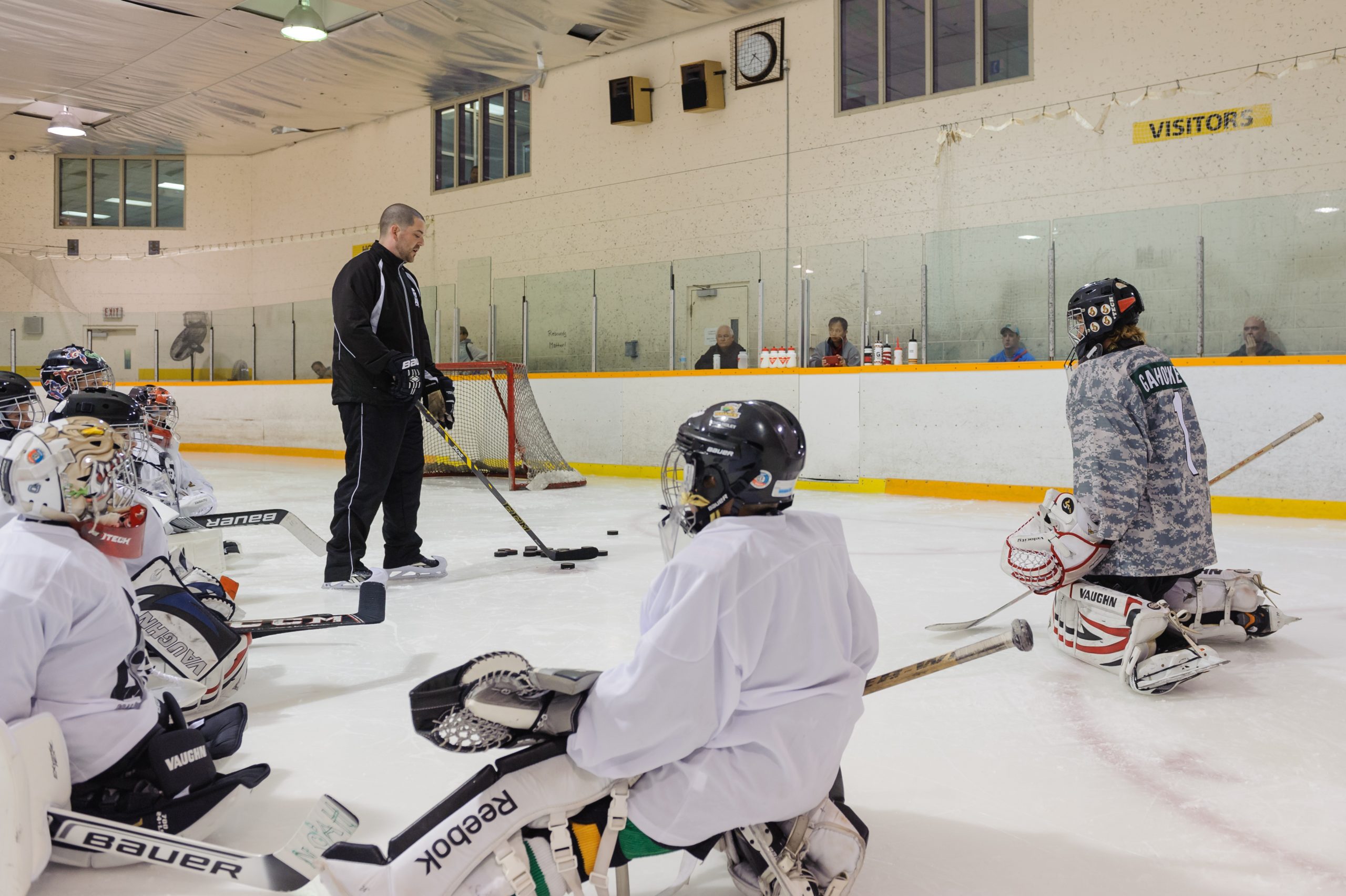
Goalie Training: Common Technical Questions
As goalie coaches, we receive a lot of questions about our goalie training programs from coaches, associations, and parents. Although we always do our best to answer them, I decided to put some information within this article so that others may learn from it as well.
Unfortunately some questions regarding the techniques which we implement into our goalie training programs are harder to answer than others, and it’s not possible to apply the same techniques or tactical decisions for every circumstance which goaltenders will face. In this article, I will address some of the common questions and concerns that I receive. Please feel free to share among any goalie parents and team coaches which you may know.
Positioning and Crease Depth
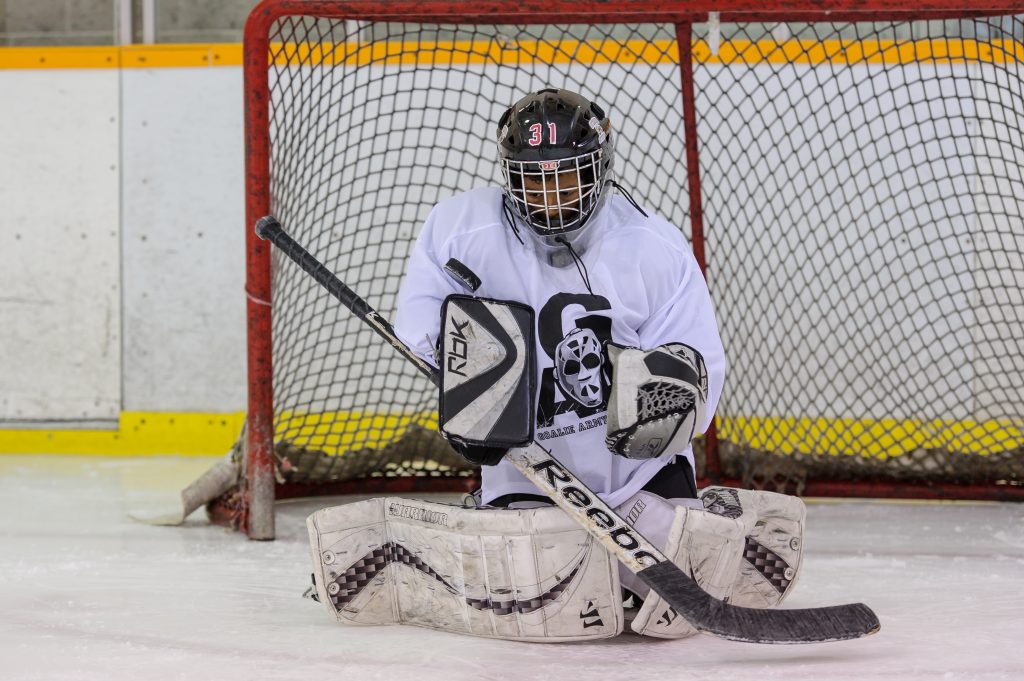 Frequently, I’m asked about positioning and depth of the crease. But when asked where the goalie should be positioned, my response: “Under which circumstance?”
Frequently, I’m asked about positioning and depth of the crease. But when asked where the goalie should be positioned, my response: “Under which circumstance?”
You see, positioning and depth is all relevant to the game situation at hand and the location of the puck. Goalies, like skaters, must analyze the play developing all around them while keeping their eyes on the puck at all times. This allows them to anticipate the next move. As I tell my students, goaltending is like a game of chess; there is a need to recognize the potential threats and consider the steps ahead as the play develops.
Being at one depth of the crease all of the time will not help goalies to stop more shots, nor will it aid in their development; the question must be based upon specific circumstances. As a goalie coach, answering this question without knowing where everyone else is located on the ice may result in providing goalies, their coaches, and parents with poor recommendations and coaching.
Glove Positioning
It’s not uncommon to be asked about glove positioning either. Because there are so many theories related to where the glove should be located at the younger levels of hockey, explaining that it is relative to the game situation at hand can be challenging for beginners to understand.
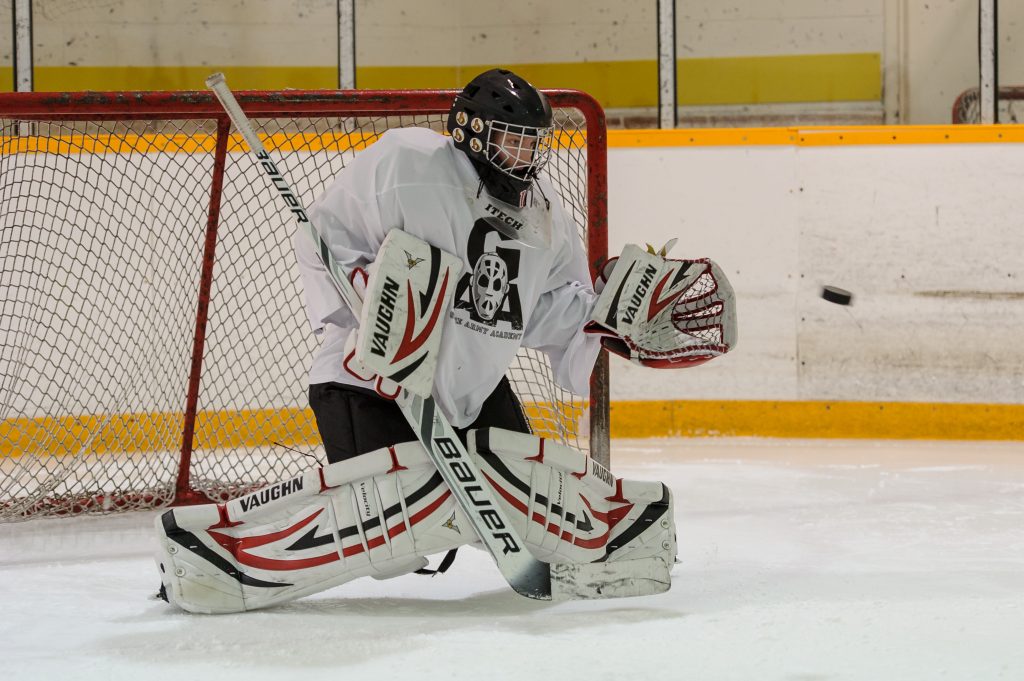 Some goalie coach theories suggest that holding the glove higher is better based on assuming that the path of the puck goes from low to high. Not a bad theory. However, shots don’t always go high. Sometimes they go from the ice to the net’s mid-level, slipping under the glove arm’s elbow. Over commitment is the common issue when scored upon under the arm.
Some goalie coach theories suggest that holding the glove higher is better based on assuming that the path of the puck goes from low to high. Not a bad theory. However, shots don’t always go high. Sometimes they go from the ice to the net’s mid-level, slipping under the glove arm’s elbow. Over commitment is the common issue when scored upon under the arm.
Because relying upon an over-commitment to high shots frequently proves ineffective when faced with quickly released low shots, placing the glove at a 9 or 10 o’clock position is an option which allows goaltenders to make a true judgement call when tracking the puck to the glove side. Allowing the goaltender to react upward, to their side, and downward enables him to react with efficiency and retain the puck with ease. It also aids goaltenders in avoiding double coverage, therefore minimizing the amount of the net visible to shooters, and the puck’s eye view. As a rule of thumb, goaltenders should look to apply a, “the closer the location of the puck, the lower my glove should be” mentality.
Stick Placement
Explaining how to hold and place the goaltender’s stick to coaches, parents, and students is imperative for setting goalies up for success as early as possible. Because the way that goalies hold their stick is essential to their technical foundation, this is an area that should never be overlooked during goalie training or within team practice environments.
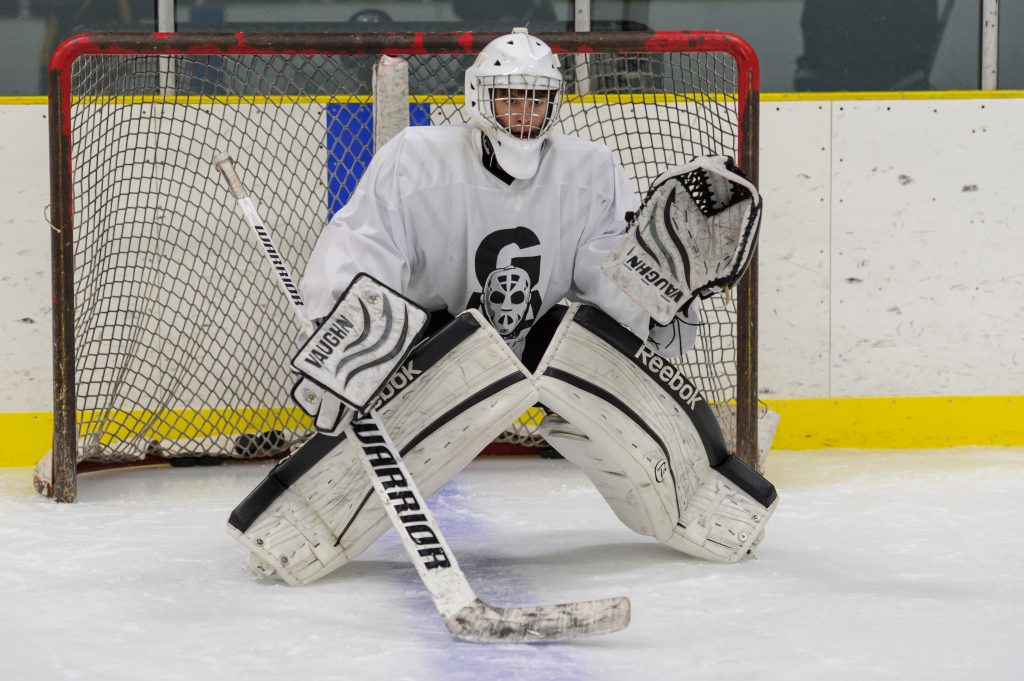 Key Points:
Key Points:
- The blade of the goalie’s stick should always be on the ice when in the ready stance or butterfly. When in a ready stance position, the blade of the stick is the only net coverage that goalies have along the ice except for the blades of their skates.
- A lifted stick indicates that the goaltender’s knees are not bent enough. If the knees are not bent, then the goalie is not ready to react for shots or quick, powerful movements.
- The blade of the stick should be held away from the goaltender’s skates. This enables the goaltender to drop into their butterfly without having the blade and paddle pop into the air.
- The blade of the stick should always be placed in front of the 5-hole. The only exception for this rule is when the puck is below the goal line, and the goaltender is at the post position. In this case, the stick should be extended along the goal line in order to cut off passes through the crease. Moving the stick from between the knees is also acceptable when directing the puck to the corners. However, this should only be attempted when there is no possibility of a deflection between the goalie’s knees.
- Applying paddle-down techniques are great when the puck is within a 0-4ft distance from the goalie. However, they should not be relied upon for all close range situations. Keep in mind, the paddle-down technique causes goaltenders to drop their upper body even lower, therefore exposing the top of the net. It should also be noted that the paddle-down technique is less effective if the goalie is not square to the puck.

Leave a Reply